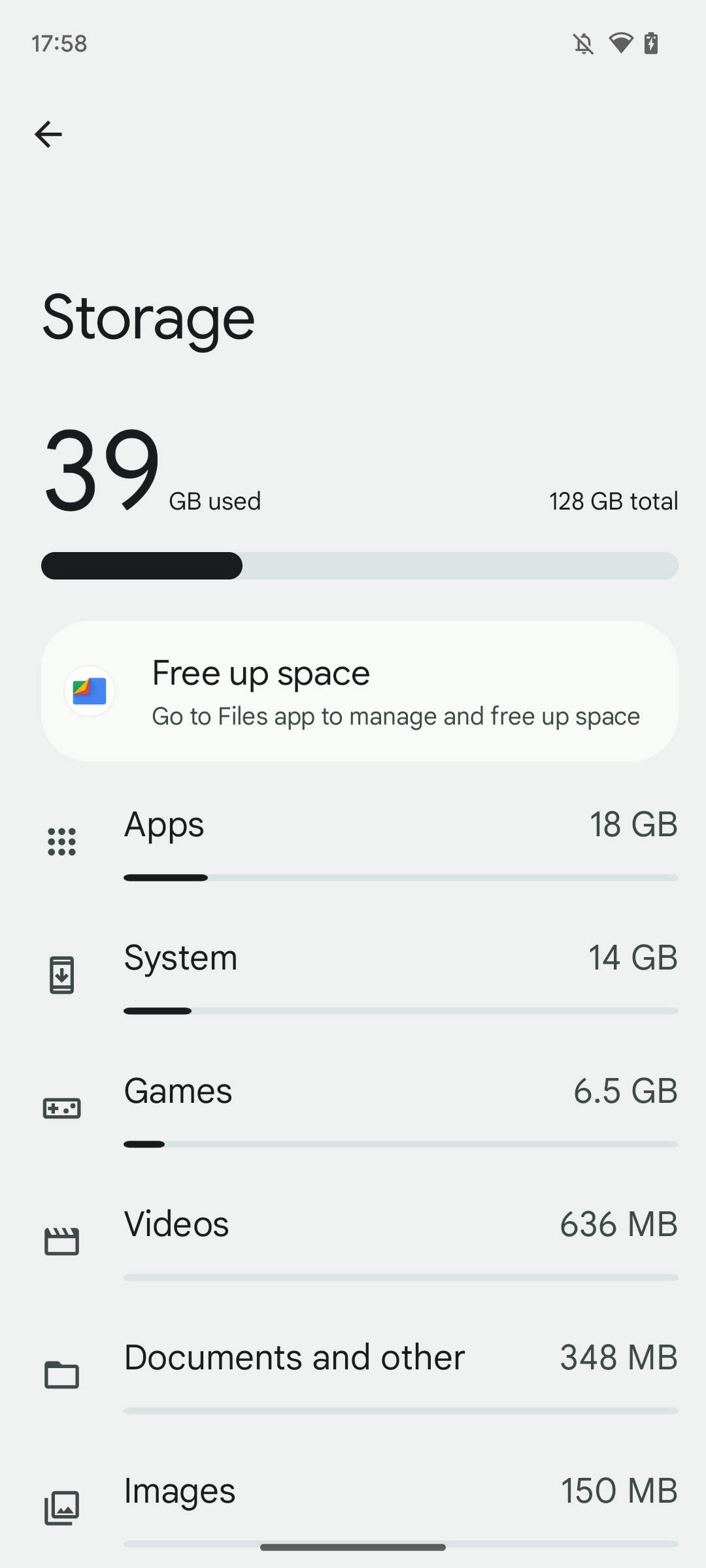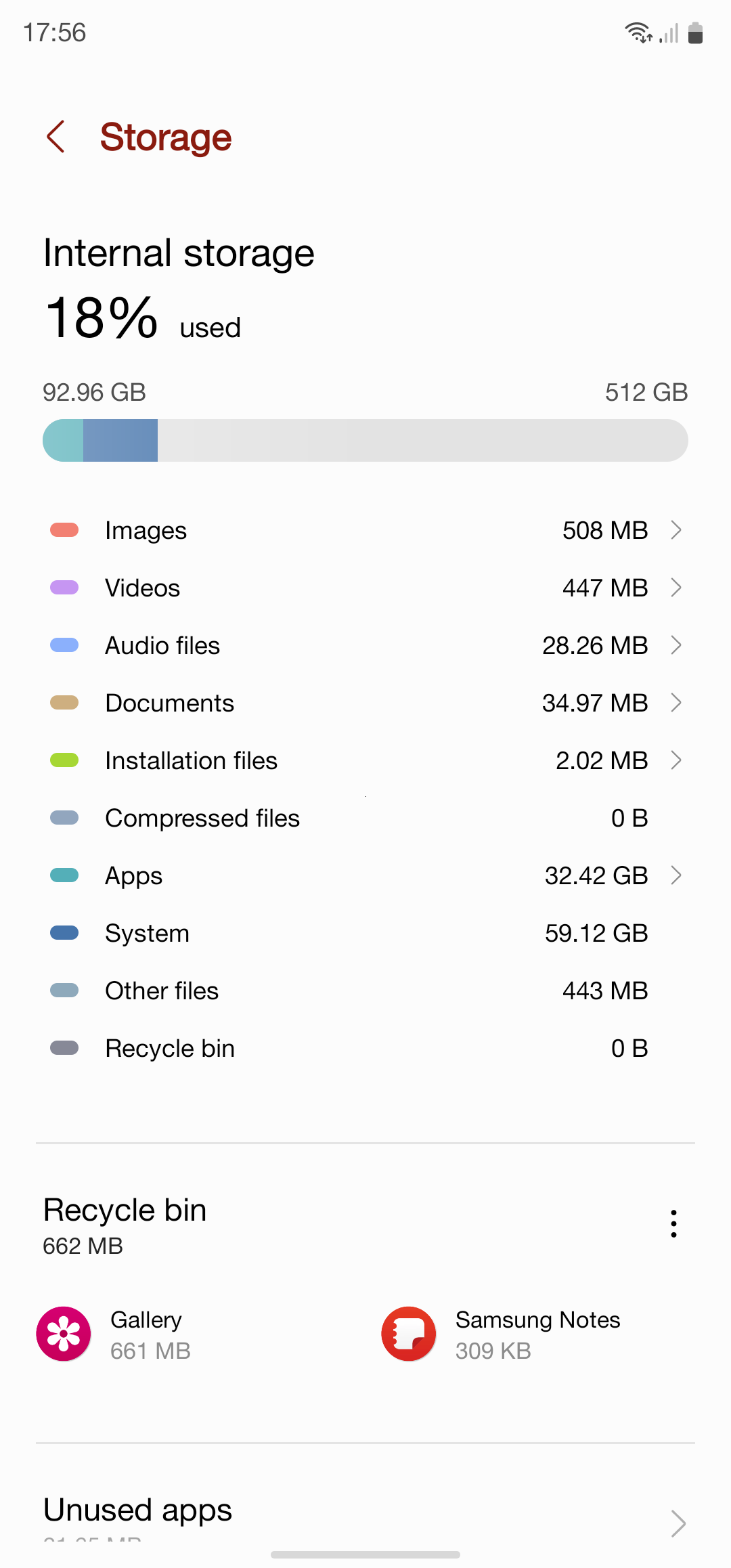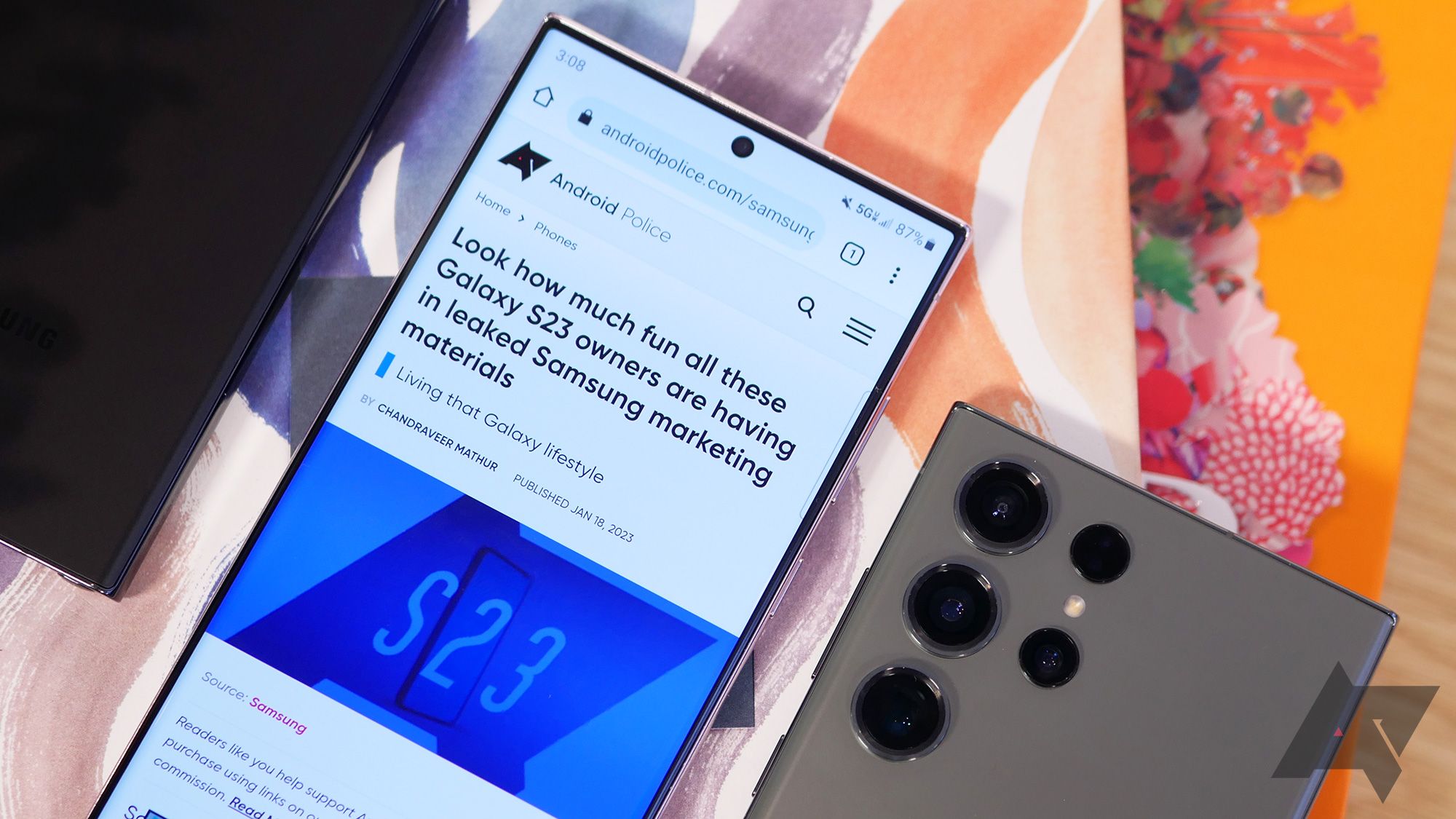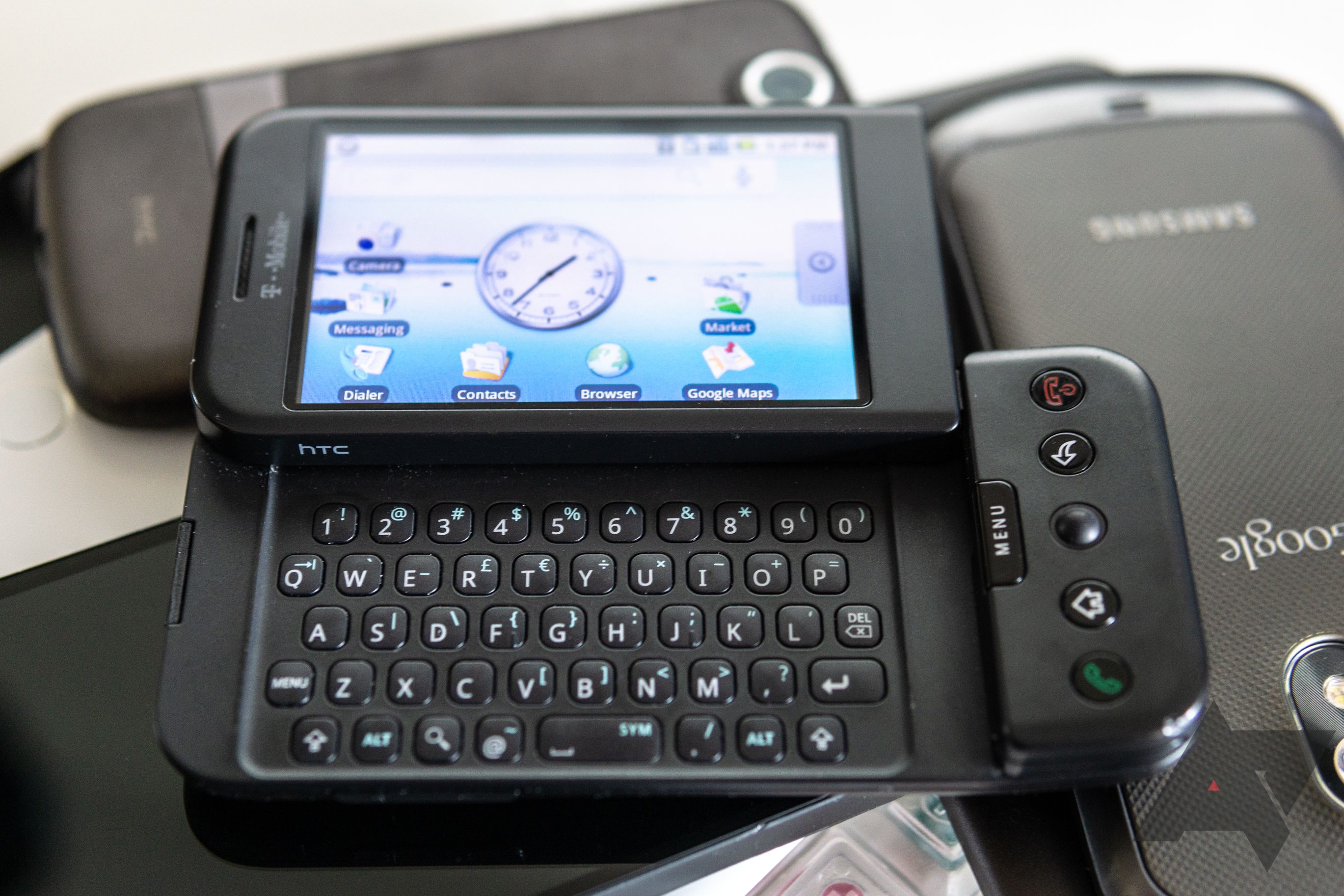The Galaxy S23 series has been the talk of the town since it was announced, and the sentiment around it has been mostly positive. Those feelings wavered a bit recently when it was reported that the 512GB S23 Ultra was using a whopping 60GB of storage space for its system partition — far larger than the 14GB you'd find on something like a Pixel 6a. Naturally, this story went viral, with people accusing Samsung of filling the S23 Ultra with unnecessary bloat. As it turns out, though, there's slightly more nuance to the story, and the truth is that the system partition on the S23 isn't quite so large.
Gibibyte vs. Gigabyte
If you've ever seen "gibibyte" printed somewhere, you'd be forgiven for assuming it was a typo. After all, we see "gigabyte" in most places, but both are valid, actual units of measurement that we use when talking about data. The distinction has to do with what we're counting by — gigabytes (GB) use a decimal system that's based on powers of 1,000, while gibibytes (GiB) are the close binary cousin, based on powers of 1,024. Back in the days of kilobytes and megabytes, that difference didn't seem like much, but on the gigabyte scale, it starts adding up. While 1GB equals 1,000,000,000 bytes, 1GiB is 1,073,741,824 bytes, or 7.3% more.
Even though we tend to call everything "gigabytes," its formal definition is mainly just used when advertising storage size (conveniently making those numbers sound bigger). But pretty much any time we're working with data on devices like our phones and laptops, their software is dealing in terms of gibibytes. That's why an SSD that says 512GB on the box will appear as a 476GB storage device in your file explorer, or a 1TB drive will be shown as a 931GB device.
How much storage does the S23 actually have?


Android displays total storage in "GB," but what are we actually looking at here? The problem stems from trying to work with both gigabytes and gibibytes in one place, and Android attempts to resolve the disparity by showing a larger system partition than what is actually being used by the OS.
A 512GB S23 Ultra reports a system partition between 54GB and 58GB. We aren't entirely sure why that number can vary, but the 54GB is taken from a US model, and the 58GB reading is from a European phone, so difference in software could play a role there. We'll use the 58GB figure for our calculations.
We established earlier that the difference between advertised storage and how much is available is about 7%. That means that your "512GB" S23 Ultra only has 476GB of space visible to the phone. But since you bought a 512GB phone, Android really wants all these storage numbers to add up to 512GB. And to make that happen, it has to tell a small fib.
Basically, Android lies about how large the system partition actually is, showing it as bigger than its true capacity in order to compensate for the disparity between gigabytes and gibibytes. Here, that's about 36GB. So, does that mean we can work out the true partition size by just subtracting it from what Android reports: 58-36=22GB? That seems simple enough, but sadly that still doesn't quite work. Our true number is probably not far off from here, but Android obscures exactly how storage is calculated, and short of rooting the phone, it's going to be hard to say with any certainty.
Even if we haven't calculated the precise size of the system partition, at least we can put to rest the idea that it's anywhere close to some whopping 60GB of bloatware, and explain why the partition size can vary between storage variants of the same phone.
Why didn't we notice?
When Android was still new on the scene, displaying storage this way didn't really make a ton of difference. After all, the HTC Dream (T-Mobile G1) only came equipped with 256MB of internal storage. It's taken a long time for us to reach the point where phones would have enough space for the difference between GiB and GB to be noticeable by users, and even longer for larger-capacity phones to become mainstream. The combination of the S23+ and Ultra's 256GB base storage and the free pre-order upgrade to 512GB meant that there were enough users out there to notice such a large system partition and question what was going on.
With high-capacity smartphones becoming the norm, we should expect more users to question why the amount of usable space is so much lower than advertised. Short of some major shift in the storage industry, though, that's unlikely to change.
Thanks: Mishaal


